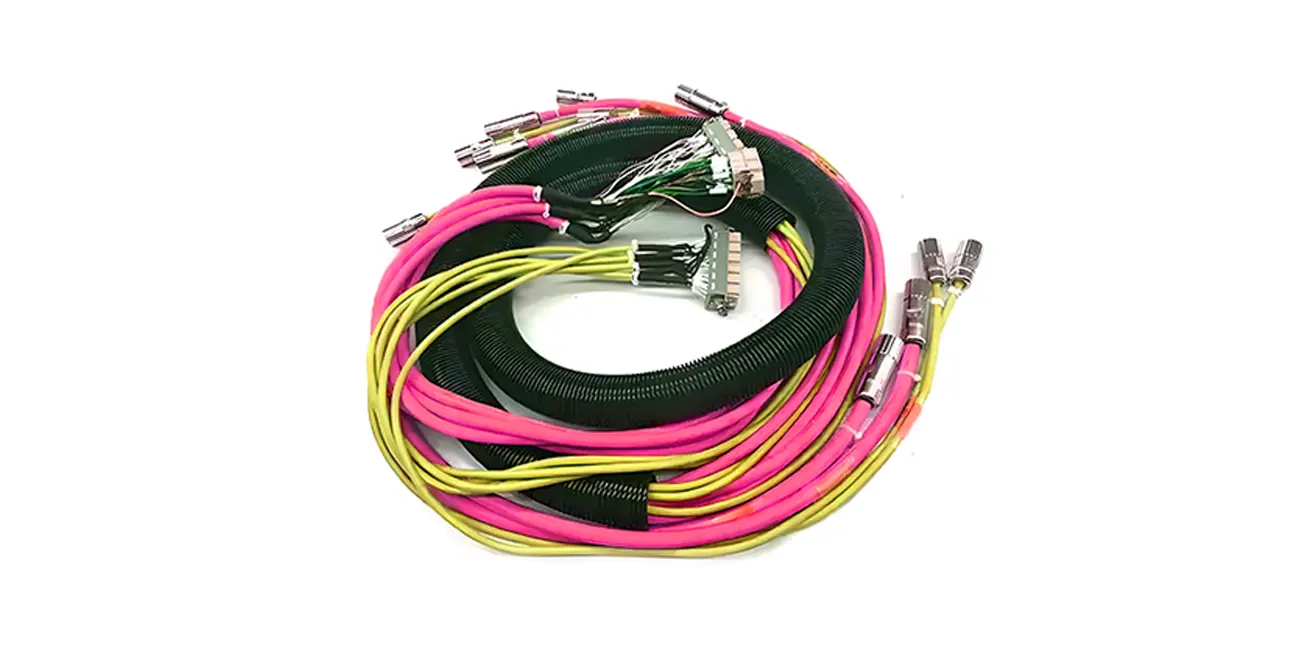
By quanyu lee
2024-12-13 06:54:22
Medical wiring harness knowledge sharing: key protection in medical devices
With the development of modern medical technology, medical equipment has gradually become more precise and intelligent. In these devices, medical wiring harnesses undertake the important tasks of data transmission, energy supply, and signal control. They are not only a bridge connecting devices and modules, but also a core link to ensure the stable operation and safety performance of medical equipment.
1. What is a medical wiring harness?
Medical wiring harnesses are cable systems specifically designed for use within medical devices and equipment. They utilize a well-designed routing and sheathing structure to transmit signals, power, and control signals. Compared to standard industrial wiring harnesses, medical wiring harnesses emphasize high reliability, compliance with medical standards, and long-term stability.
2. What are the customization requirements for medical cable harnesses?
Medical cable harnesses are typically customized based on the functions of different devices. Key requirements include:
Biocompatibility: Materials must meet medical safety standards to avoid harm to patients or operators.
Durability: They must be resistant to abrasion, stretching, and bending, making them suitable for high-frequency use.
Sterilization Compatibility: They must be able to withstand sterilization methods such as high-temperature steam, ethylene oxide, or gamma radiation.
Electrical Safety: The conductors and insulation must have sufficient voltage resistance and anti-interference capabilities to prevent signal distortion or leakage.

3. Typical Application Scenarios for Medical Cable Harnesses
Medical cable harnesses are widely used in:
ECG monitors, blood pressure monitors
Ultrasound, CT, MRI, and other diagnostic imaging equipment
Surgical robots, minimally invasive surgical instruments
Infusion pumps, ventilators, anesthesia machines
Wearable medical devices and home medical devices
![]()
4. The difference between a medical wiring harness and an ordinary wiring harness
| Dimension | Medical wiring harness | Ordinary wiring harness |
| Material safety | Compliant with the ISO 10993 biocompatibility standard, non-toxic, and harmless | Emphasis on universality, no mandatory biosafety requirements |
| Environmental tolerance | Resistant to high-temperature disinfection and chemical corrosion (such as alcohol and glutaraldehyde) | Only suitable for regular temperature and humidity environments |
| Certification standards | Require FDA, CE medical certification, and industry standards such as YY/T 0691 | Compliant with general electrical safety standards (such as IEC) |
5. What connectors are used in medical wiring harnesses?
Common medical wiring harness connectors include:
Circular connectors (such as waterproof and quick-disconnect types)
Rectangular connectors (mostly used in modular medical devices)
High-density pin connectors (suitable for signal-intensive devices)
Disposable connectors (commonly found in disposable medical wiring harnesses)
6. How to choose a medical device wiring harness
When selecting a wiring harness for medical devices, multiple considerations must be considered, including compliance, material properties, adaptability, and quality assurance. First, it is crucial to prioritize compliance with authoritative medical certifications, such as the International Electrotechnical Commission (IEC) standard, ISO 13485 quality management system standard for medical devices, the RoHS directive, and UL safety certification. This is essential for ensuring the wiring harness's legal use. Secondly, material safety must be highly valued, ensuring that the material is non-toxic and harmless, meets medical hygiene standards, and exhibits excellent sterilization resistance to accommodate conventional sterilization processes for medical devices. Furthermore, attention must be paid to whether customized services are available, such as the ability to adjust conductor cross-sections, customize sheath colors, and optimize shielding structures based on actual needs, to ensure the wiring harness accurately matches the installation and use requirements of specific medical devices. Furthermore, it is crucial to confirm whether the manufacturer can provide complete test and traceability reports. Detailed test data and full-process traceability information can further guarantee the wiring harness's quality, stability, and reliability.
7. Disposable Medical Cable Harnesses and Supporting Equipment
Disposable medical cable harnesses are becoming increasingly common in clinical settings. Common types include ECG electrode cables and catheter cables. These harnesses are often used with disposable probes, specialized sensors, and various surgical instruments to meet the specific needs of different medical procedures. As components designed specifically for single-use diagnostic and treatment procedures, disposable medical cable harnesses offer multiple core advantages: they fundamentally mitigate the risk of cross-infection between patients, effectively ensuring medical safety; they eliminate the repeated cleaning and disinfection required of traditional reusable cable harnesses, significantly reducing operational and maintenance costs for medical institutions; and their ready-to-use nature reduces instrument preparation time, effectively improving overall clinical efficiency.

8. Key Considerations for Selecting a Medical Cable Harness Supplier
When selecting a medical cable harness supplier, medical device companies should focus on the following:
Certifications: Whether the supplier possesses relevant certifications, such as ISO 13485, ISO 9001, and UL.
Customization Capabilities: Whether the supplier can provide one-stop services from design and prototyping to mass production.
Case Studies: Whether the supplier has experience working with large medical device companies and can meet international market demands.
Quality Traceability: Ensure that every cable harness can be traced back to the production stage.
9. FAQs: Frequently Asked Questions About Medical Cable Harnesses
Q1: What is the difference between medical cable harnesses and standard electronic cable harnesses?
A: Medical cable harnesses must meet biocompatibility and medical certifications, and have more stringent safety standards.
Q2: Can medical cable harnesses be sterilized at high temperatures?
A: Most medical cable harnesses are made of high-temperature-resistant materials and can withstand high-temperature steam or ethylene oxide sterilization, but this depends on the product design.
Q3: Can disposable medical cable harnesses be reused?
A: Not recommended. Disposable cable harnesses are for single use only to prevent cross-contamination.
10. Summary
Medical wiring harnesses are a crucial element in ensuring the stable operation, safety, and reliability of medical equipment. From material selection and customization requirements to application scenarios, they embody the high standards and stringent requirements of the medical industry. As medical equipment continues to evolve, future medical wiring harnesses will become more intelligent, lightweight, and highly reliable, becoming a crucial component driving the development of the medical industry. If you need any custom wiring harness, you can contact us.



